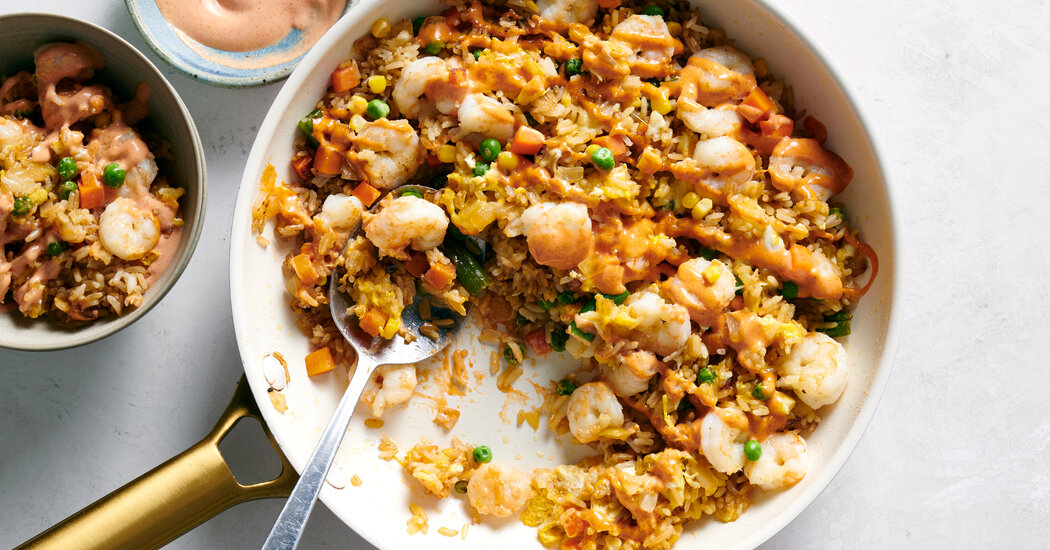
When the Australian pop star Troye Sivan sings the line, “Take a trip into my garden, I’ve got so much to show ya” in his 2018 summer bop “Bloom,” he probably isn’t referring to an icy Eden of corn, carrots and peas. But he should be.
Buried inside freezers all over the United States today, bags of corn, carrots and peas — separate, or all together as “mixed vegetables” — are the workhorses of the home kitchen. A pea (or corn or carrot) flash-frozen at its peak ripeness is a thing of wonder, a reliable standby across cultures. Heat can reanimate the vegetables in a big pan of fried rice, in a burbling pot of vegetable-beef soup or in a luscious chicken potpie.
But frozen mixed vegetables come in especially handy when making shrimp fried rice, not least because the vegetables need only to be thawed by the skillet’s high heat. As you stir them into the shrimpy oil, they cook quickly, lending their gentle bite to the rice and enlivening it with a confetti of yellow, orange and green.
The medley’s staying power might lie in its classic colors, or in its natural sweetness, not to mention its cleverness. (The vegetables’ consistent size means they cook in the same amount of time.) But what makes the medley especially powerful is how it is seamlessly folded into dishes that don’t traditionally call for frozen vegetables.
In Indian cooking, sabzi comes to mind, as do pulao and biryani. The Atlanta-based journalist Sonam Vashi makes a tadka of mustard seeds bloomed in oil, into which she blisters frozen mixed vegetables, which she then enjoys with paratha. Ms. Vashi said she learned this technique from her mother, who immigrated from India to Greer, S.C., in 1971 and was adapting to the groceries that were available to her.
Frozen mixed vegetables also work wonders in a Japanese-style curry rice, matching the sweetness of the gravy while adding color. You could shuck your own corn, peel your own carrots and shell your own peas for any of those dishes or for a Korean gamja salad, or you could reach for frozen.
We can thank Clarence Birdseye for the modern luxury of frozen vegetables. In the early 1900s, while living in Labrador, Mr. Birdseye found that fish frozen quickly in the dead of winter had smaller ice crystals and tasted fresher than fish frozen at a slower rate in early or late winter.
In 1928, he applied this knowledge to an invention that would birth the modern frozen-food industry: the double belt freezer — two continuous metal belts, made very cold with calcium chloride, which pressed and froze packages of food almost instantly.
During World War II, frozen vegetables saw an uptick in popularity. In 1952, Ore-Ida was founded and specialized in frozen corn and French fries, inventing Tater Tots, made with leftover potatoes, a year later. Today, Green Giant, the company that once popularized the canned pea, now also sells frozen spirals of butternut squash and zucchini — and a vegetable mix of their own.
Despite their ubiquity, frozen mixed vegetables can carry a stigma, most likely rooted in bad memories of grade-school peas and carrots, or misconceptions that fresh is always better than frozen. But not only do the fresh versions of these same vegetables quickly languish in the crisper drawer, access to them can be limited (and expensive).
As much as people love to hate frozen vegetables, many have a soft spot for that nostalgic combination of corn, carrots and peas, which lend an uncomplicated sweetness to dishes, something we could all use from time to time.
Recipes: Shrimp Fried Rice | Yum Yum Sauce



